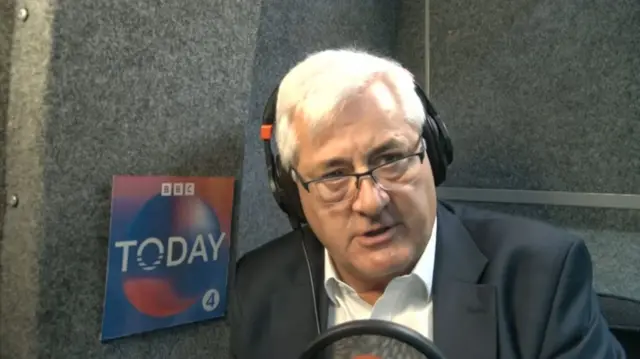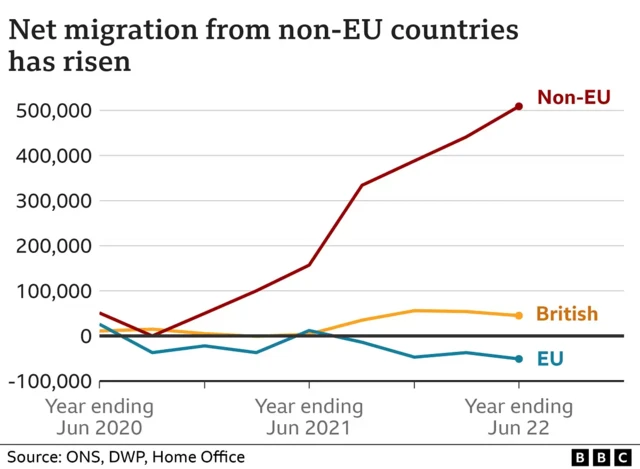Every Briton is descended from an immigrant - Dr Peter Drechslerpublished at 09:18 BST 25 May 2023
 Image source, .
Image source, .Dr Peter Drechsler, chair of the ICC UK, external, has also been speaking to BBC Radio 4’s Today programme ahead of the new figures being released.
He says “it’s worth remembering that every single person living in Britain today is the descendant of an immigrant”.
Drechsler adds it’s very important we change the narrative about migration so we are speaking about immigrants with “respect and appreciation”.
He continues by saying there “is no vision” or “strategy” from the government about what sort of “talent” the UK needs for its future workforce.



